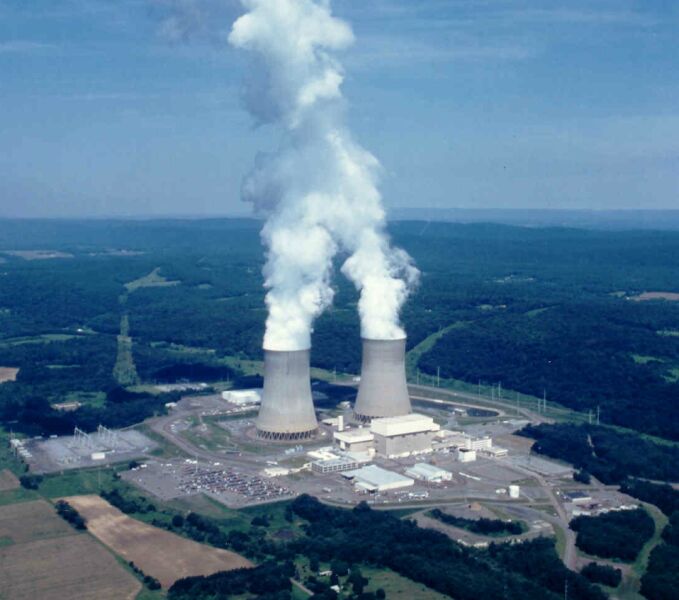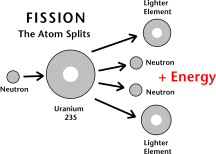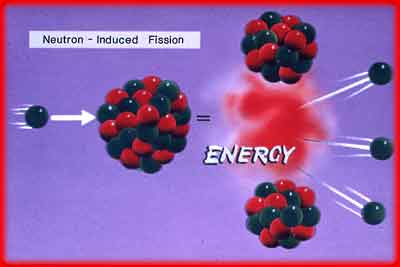Nuclear Fission
In nuclear fission, atoms split apart to form smaller atoms, releasing energy. Nuclear power plants convert this released energy into electricity.
How does a nuclear power plant work?

The fuel most widely used by nuclear power plants is uranium. Uranium is non-renewable. It is found in trace (tiny) amounts in many rocks. Nuclear plants use a certain kind of uranium, Uranium-235, as fuel because its atoms are easily split apart. When Uranium-235 absorb a neutron, a fission (or splitting) of the atom often results. Fission splits the atom into two or more smaller elements and also releases energy and neutrons. Some of the neutrons produced can be absorbed by other Uranium atoms. These split and release more neutrons sustaining a chain reaction.



